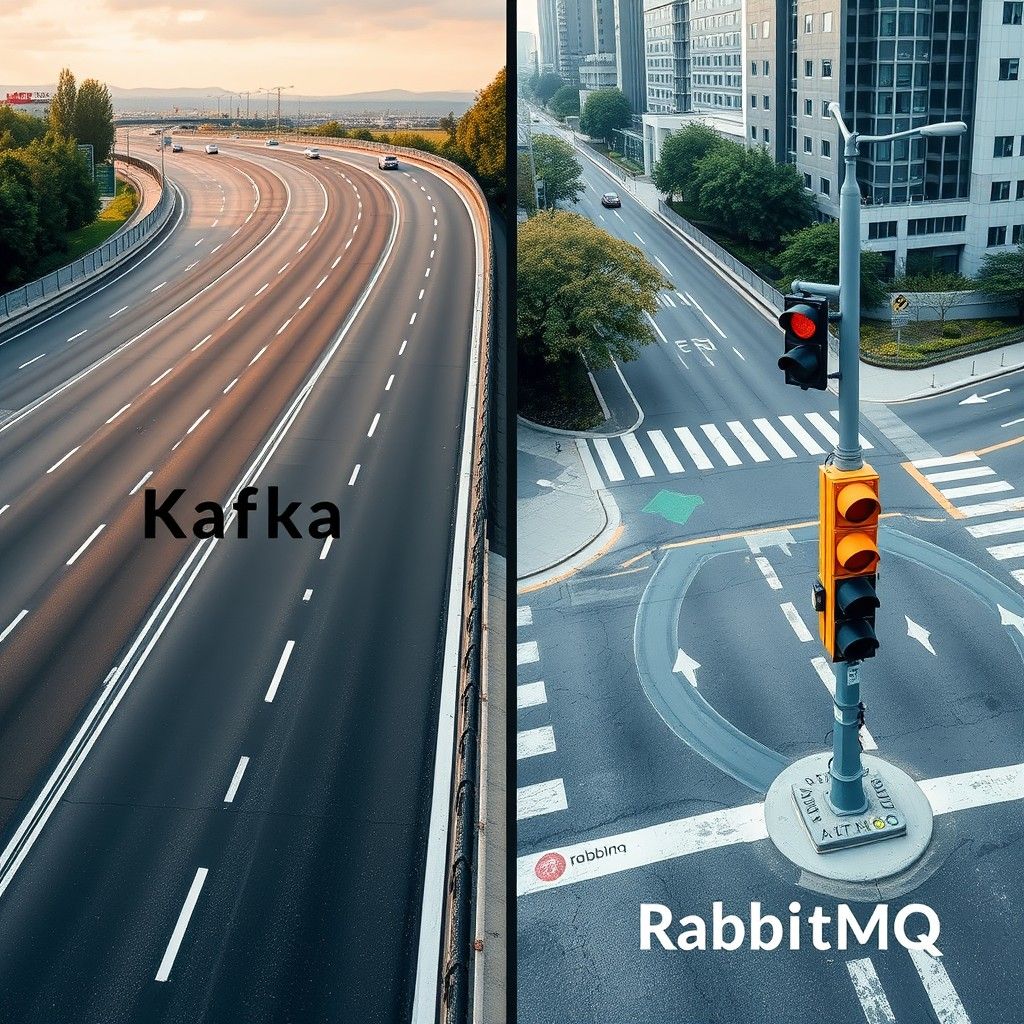The difference between Kafka and RabbitMQ: Choosing the right messaging system

In the world of distributed systems, two popular messaging solutions often come up in discussions: Apache Kafka and RabbitMQ. While both are used to handle messages and events, they serve different purposes and have different design philosophies. This article examines the key differences between Kafka and RabbitMQ to help you make an informed decision when choosing between these two powerful tools.
Architectural Differences
Kafka: Stream Processing System
Kafka is designed as a distributed streaming platform, optimized for high-throughput, fault-tolerant, and scalable event processing. It's built around the concept of append-only logs, where messages are immutable and retained for a configurable period.
RabbitMQ: Traditional Message Queue
RabbitMQ, on the other hand, is a more traditional message broker that implements various messaging protocols, including AMQP (Advanced Message Queuing Protocol). It focuses on reliable message delivery and complex routing scenarios.
Consumer Patterns
Kafka: Fan-out by Default
In Kafka, multiple consumers can read from the same topic independently, each maintaining its own offset. This allows for easy fan-out scenarios where multiple systems process the same data.
# kafka consumer
require 'kafka'
kafka = Kafka.new(["localhost:9092"])
consumer = kafka.consumer(group_id: "my_group")
consumer.subscribe("my_topic")
consumer.each_message do |message|
puts "Received message: #{message.value}"
endRabbitMQ: Single Consumer per Message
RabbitMQ typically delivers each message to a single consumer, making it ideal for work queue scenarios where tasks need to be distributed among workers.
# rabbit consumer
require 'bunny'
connection = Bunny.new
connection.start
channel = connection.create_channel
queue = channel.queue("my_queue")
queue.subscribe(block: true) do |_delivery_info, _properties, body|
puts "Received message: #{body}"
endMessage Routing
Kafka: Producer-side Routing
In Kafka, producers are responsible for determining which partition a message should be sent to. This allows for high throughput but limits flexibility in routing after the message is produced.
# kafka producer
require 'kafka'
kafka = Kafka.new(["localhost:9092"])
producer = kafka.producer
producer.produce("Hello, Kafka!", topic: "my_topic", partition_key: "user_123")
producer.deliver_messages
RabbitMQ: Exchange-based Routing
RabbitMQ uses exchanges to route messages to queues based on various criteria, offering more flexibility in message distribution.
# rabbitmq producer
require 'bunny'
connection = Bunny.new
connection.start
channel = connection.create_channel
exchange = channel.direct("my_exchange")
exchange.publish("Hello, RabbitMQ!", routing_key: "user.created")
Use Cases
So let's see which system we should use and when:
Kafka - Stream processing
- Stream data analysis
- Event-driven architectures
- Log aggregation
- Replay
- Real-time data pipelines
RabbitMQ - Message queue
- Task queues
- Request-response patterns
- Microservices communication
- Complex routing scenarios
- Intended for one consumer per message
Acknowledgment and Message Handling
Kafka: Offset-based
Kafka uses offsets to track message consumption. Consumers commit offsets to mark their progress.
RabbitMQ: Explicit Acknowledgments
RabbitMQ requires explicit message acknowledgments from consumers to ensure reliable delivery.
Performance and Scalability
Kafka is designed for extremely high throughput and horizontal scalability, making it suitable for big data scenarios. RabbitMQ, while still performant, is typically used for more moderate message volumes and complex routing needs.
Summary
Kafka and RabbitMQ are both powerful messaging systems, but they excel in different areas. Kafka is ideal for high-throughput event streaming and data pipelines, while RabbitMQ shines in scenarios requiring complex routing and traditional message queuing. Understanding these differences is crucial for choosing the right tool for your specific use case.
Happy queueing!